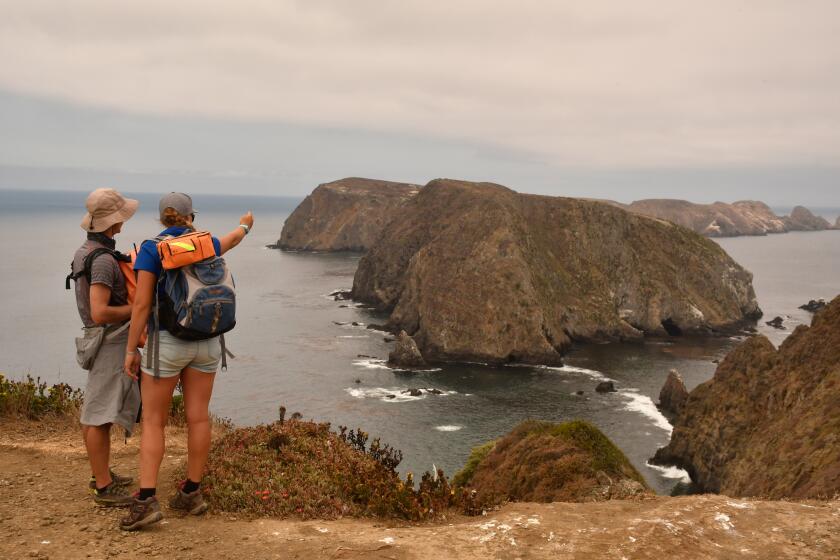Dramatic before-and-after images show how much water California reservoirs have accumulated

- Share via
With the winter storm season ramping up, rainfall across the state has begun to refill reservoirs.
By Tuesday, water reservoirs were at about 64% capacity, well above the 30-year average of 55% for the month of December.
After last year’s historically wet winter, many of California’s largest water stores were at or near capacity during the summer months of 2023.
Big surf roared into Southern California as a winter swell built up through the day; it’s expected to stick around through Friday.
But over the last six months, the state has used up some of its stored water. The two largest reservoirs, Lake Oroville and Lake Shasta, dropped from nearly full in June 2023 to around two-thirds full by Christmas.
Still, the reservoirs are now in much better shape than they were in December 2022. The images below from the California Department of Water Resources show Lake Oroville at the West Branch Feather River Bridge in December 2022 and December 2023.
On Dec. 21, 2022, when the photo on the left was taken, Lake Oroville stood at just 29% of its capacity. By Dec. 14, 2023, when the photo on the right was taken, that figure was 66%.
The images below show the same area when Lake Oroville stood at 100% of capacity on June 12, 2023, and again on Dec. 14, 2023, at 66%.
The series of atmospheric rivers that drenched the state in late 2022 and early 2023 revived California’s water storage.
In the images below, Lake Oroville’s Bidwell Bar Bridge is pictured on Dec. 21, 2022, and on June 12, 2023.
The dramatic difference between the photos shows the amount of water more than tripling in around six months, rising from dangerously low levels to brimming.
With another potentially wet winter ahead, reservoirs could be full once more. Experts have projected a warm, wet El Niño winter.
But despite several recent storms, another key metric of water storage is well below historical levels.
The state’s snowpack was at just 29% of normal on Dec. 28, according to DWR data.
The photos below from Enterprise Bridge on Lake Oroville show the amount of water more than doubling from December 2022 to December 2023. The levels, which had dropped to about one quarter of capacity last year before filling up entirely by summer 2023, are now at around two-thirds full.
Even with last year’s wet winter and the downpours that have begun this year’s storm season, California’s groundwater remains depleted and could take much longer to be replenished.
More to Read
Sign up for Essential California
The most important California stories and recommendations in your inbox every morning.
You may occasionally receive promotional content from the Los Angeles Times.















